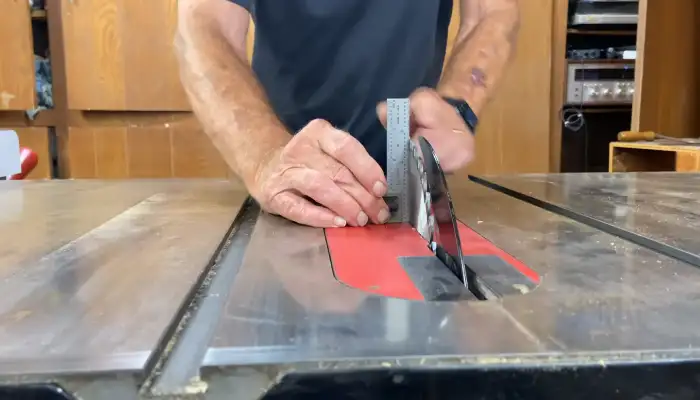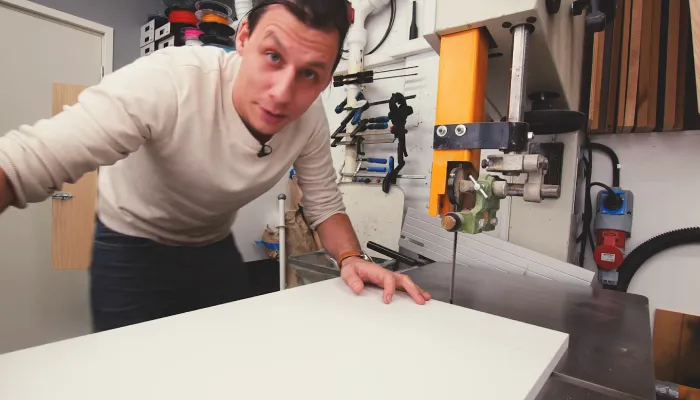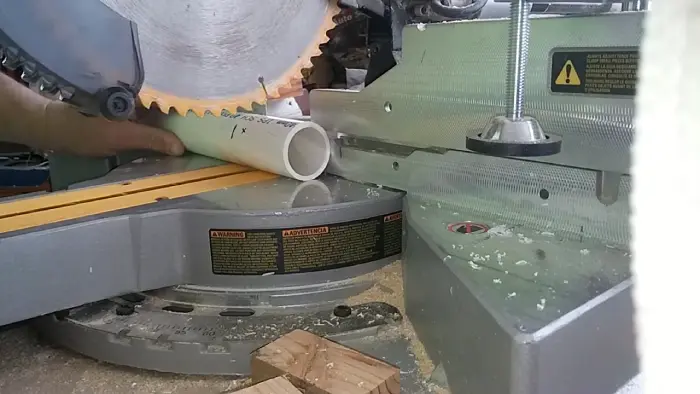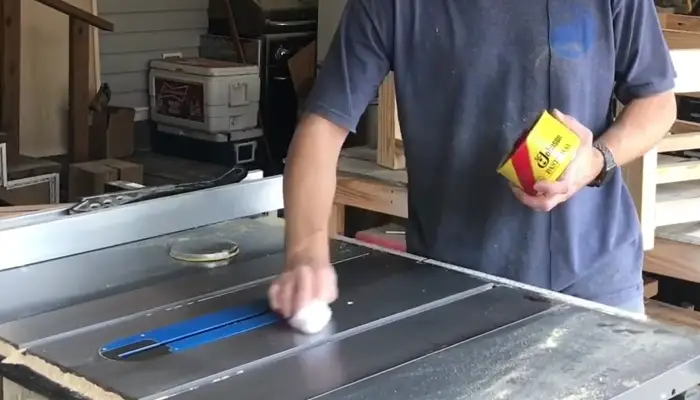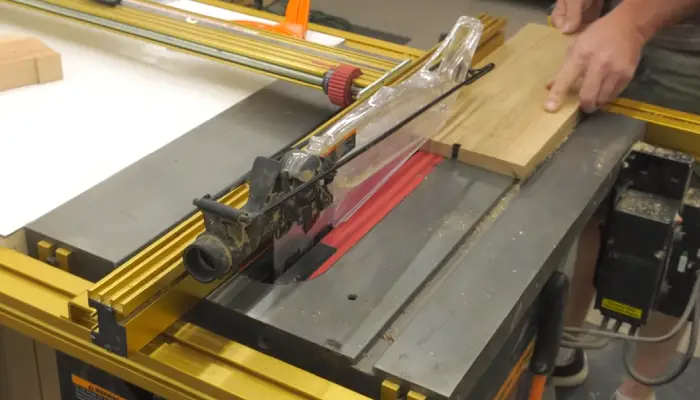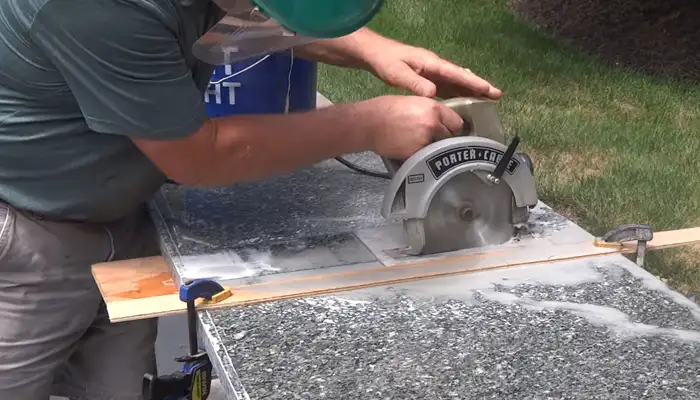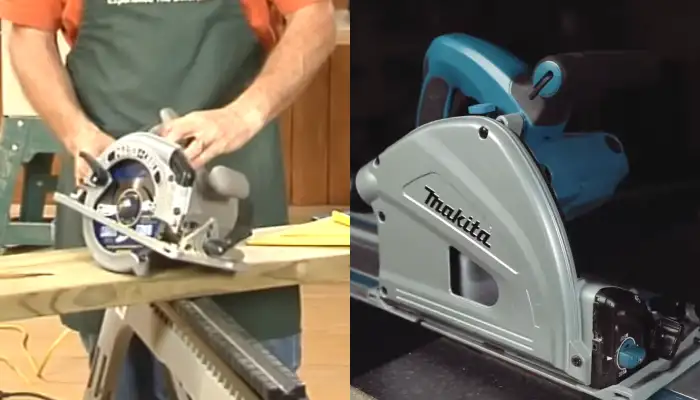Why Does My Table Saw Not Cut Straight: 6 Reasons with Solutions
Straight cuts using a table saw are essential for any woodworking project. However, if your cuts are uneven or wavy, it can lead to wasted materials and an unsatisfactory result. I found that many people struggle with this issue, and that’s why I researched why a table saw may not cut straight.
According to my studies, misaligned blades can cause inaccurate cuts, as the blade isn’t perfectly parallel to the fence and miter slot. Using a warped blade can also result in difficulties when making straight cuts.
I will discuss all the possible reasons behind the table saw not cutting straight and share solutions to ensure a perfect cut in each woodworking project.
Why Does My Table Saw Not Cut Straight: 6 Possible Reasons with Solutions
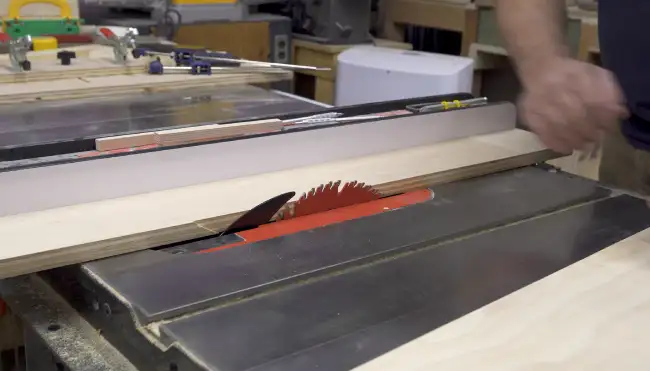
There are several potential reasons I found that your table saw may not be cutting straight, including:
- Misaligned blade
- Inadequate pressure and poor cutting form
- Warped blades
- Loose blade holding nut
- Misaligned fence
- Inadequate support for longer workpieces
1. Misaligned Blade
To ensure straight cuts on your table saw, start by checking for a misalignment of the blade in relation to the fence and miter slot. This is one of the most common reasons for inaccurate cuts. When the blade is not parallel to the fence and miter slot, it can cause the cut to veer off course.
To resolve this issue, you need to check and adjust the alignment of the blade. Make sure that the miter slot runs parallel to the blade and the fence is aligned with both the blade and the miter slot. To make precise adjustments, use a framing square.
If the blade isn’t perfectly square to the table, raise it halfway above the table and use a framing square to ensure it’s perpendicular.
Addressing blade misalignment, along with maintaining a level on the table saw’s surface, will significantly enhance the accuracy of your cuts and enable you to achieve consistently straight results on your table saw.
2. Inadequate Pressure and Poor Cutting Form
Inadequate pressure against the fence and poor cutting form can lead to inaccurate cuts and a lack of precision. When making a cut, it’s essential to push the wood firmly against the fence to keep it in place throughout the entire cut. This will help prevent any movement or drifting, resulting in a straighter cut.
Additionally, it’s crucial to apply consistent pressure down the length of the stock to maintain control and stability. Using push blocks can provide a secure grip on the wood and keep your hands safe from the blade.
Remember to keep the wood flat on the table and ensure it’s flush against the fence for the most accurate and straight cuts possible.
3. Warped Blades
To achieve straight cuts on your table saw, check for a warped blade and replace it with a new, straight blade suitable for the type of wood and cut. A warped blade can cause your table saw to make uneven cuts and a lack of precision.
Warping can occur when the wrong blade is used for specific wood types or cuts. It’s crucial to use the right tool for the job to ensure accurate and smooth cuts. Inspect your blade for any signs of warping, such as visible bends or wobbles.
If you notice any irregularities, it’s time to invest in a new blade that’s straight and specifically designed for the type of woodworking you’re doing. Don’t let a warped blade compromise the quality of your cuts. Replace it and enjoy the benefits of straight, precise cuts on your table saw.
Furthermore, it’s worth noting that a warped blade can also hinder your work when making angle cuts with a table saw, as it may result in inaccuracies and imprecise bevel cuts.
4. Loose Blade Holding Nut
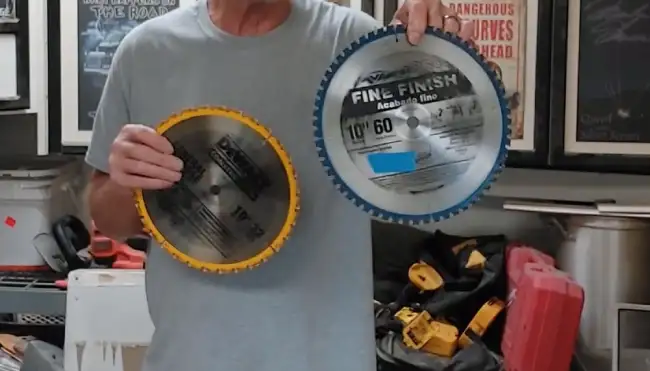
A loose blade holding nut can be a major culprit behind your table saw’s uneven cuts. When the blade-holding nut isn’t tightened properly, it can cause the blade to wobble or shift during cutting, resulting in inaccurate and inconsistent cuts.
This issue is more common than you might think, and it can easily happen over time due to regular use and vibrations. To ensure straight cuts and prevent this problem, it’s crucial to regularly service your saw and check the tightness of the blade holding nut.
5. Misaligned Fence
When dealing with a misaligned fence on your table saw, you may experience issues with straight cuts and potential safety hazards.
A misaligned fence can cause the wood to veer off course, resulting in uneven cuts that aren’t straight and accurate. This can be frustrating and can also pose a safety risk, as the wood may bind or kick back during the cut.
To address this problem, you should check and adjust the alignment of the fence. Using a carpenter’s square, ensure that the fence is aligned with both the miter slot and the blade. Additionally, it’s important to regularly check the locking jaw of the fence to prevent it from wandering during the cut.
This precaution is particularly crucial when working with various materials, including cutting Plexiglass or any other material with a table saw.
6. Inadequate Support for Longer Workpieces
If you don’t provide adequate support for longer workpieces on your table saw, it can result in inaccurate and uneven cuts. Longer pieces have a tendency to sag or twist during cutting, which can throw off the alignment and compromise the straightness of your cuts.
To prevent this, it’s essential to use additional supports, such as sawhorses or roller stands. These supports help to maintain the stability of the workpiece and ensure even pressure against the fence, resulting in straight and precise cuts.
How tight should the table saw blade be for achieving straight cuts?
To achieve straight cuts on your table saw, it’s crucial to strike a balance with the tightness of the arbor nut securing the blade. Based on my research, the nut should be tightened just enough to prevent easy loosening but still allow for comfortable loosening with a wrench.
An overly tight nut could cause injury, while a loose nut could cause blade wobbling, leading to imprecise cuts. Maintaining an optimal level of tightness ensures safety and accuracy while cutting on your table saw.
How can you determine if your table saw blade is too dull to produce straight cuts?
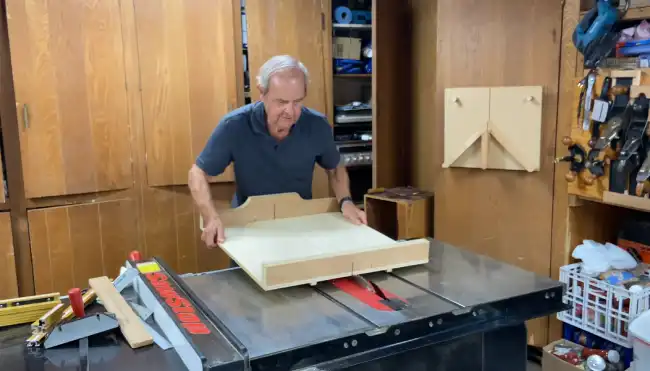
To determine if the blade on your table saw is too dull to produce straight cuts, carefully observe the condition of the blade and the quality of the cuts it produces.
Start by examining the effort required to make cuts. If you find that the blade is struggling to go through the material and you need to exert more force, this is a clear indication of a dull blade.
Next, take a close look at the cuts themselves. A sharp blade will provide clean, perfect lines, so if you notice less clean cuts or imperfections in the wood, it’s likely that your blade has lost its sharpness.
Additionally, look for burn marks on the wood accompanied by smoking, as these are also signs of a dull blade. Visually inspect the blade. If it appears dull, it’s time for a replacement.
Identify and Overcome Common Challenges for Straight Cuts With Your Table Saw
When you face challenges with your table saw not cutting straight, check out the reasons and tips that I’ve shared for precise, accurate cuts. You can improve the quality of your cuts by fixing issues like misaligned blades, inadequate pressure, warped blades, loose blade holding nuts, and misaligned fences.
Understanding these issues and applying the right solutions will improve your precision and make your woodworking experience safer and more enjoyable. Ensure your blade is properly aligned, maintain adequate workpiece support, and always prioritize safety for the best results.

